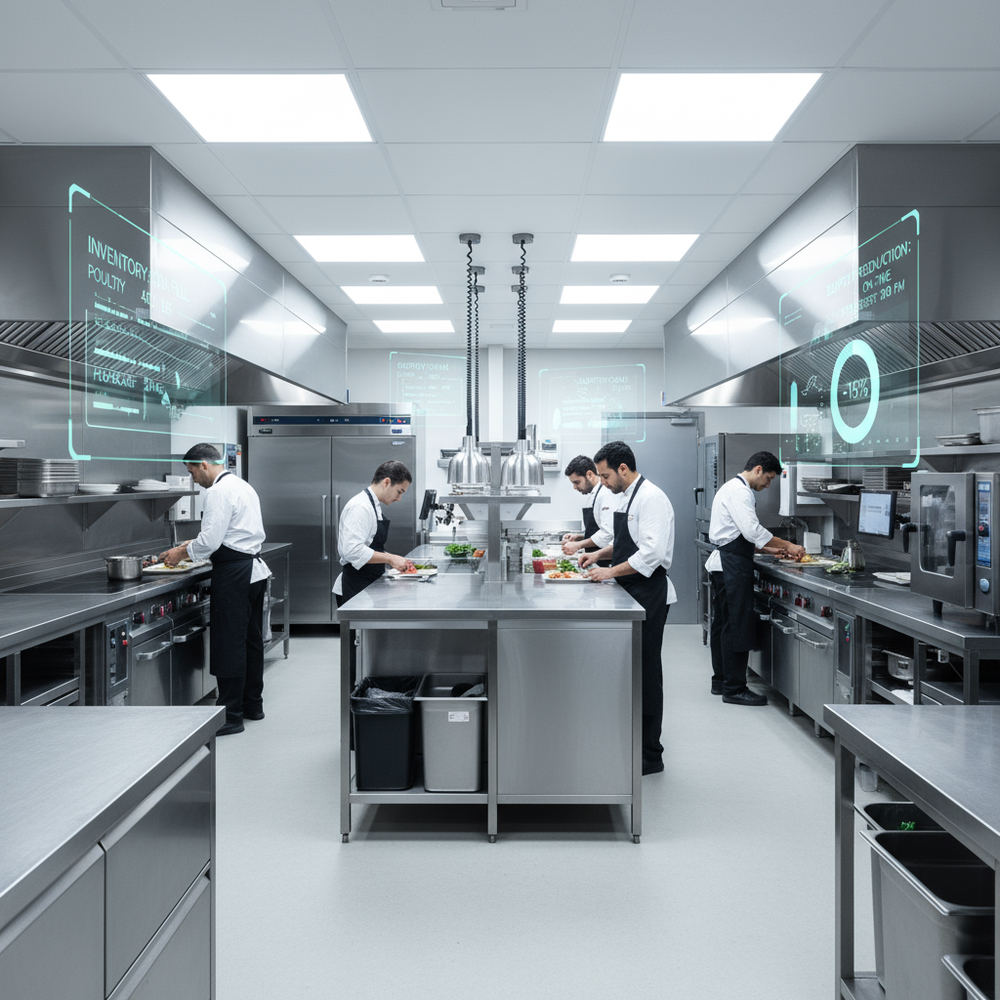While the front-of-house gets most of the attention with its bustling atmosphere and direct customer interactions, the true heart of any successful restaurant or bar lies in its back-of-house operations. This is where the magic happens, but it’s also where inefficiencies can quietly eat away at your profits. From inventory management and supply chain logistics to waste reduction and staff coordination, the back-of-house is a complex ecosystem where even small improvements can have a significant impact. This is where Artificial Intelligence steps in, not as a flashy gimmick, but as a silent, powerful partner dedicated to optimizing every aspect of your operations for maximum efficiency and profitability.
One of the most significant challenges in any kitchen is managing inventory and the supply chain. Over-ordering leads to spoilage and waste, while under-ordering results in menu shortages and disappointed customers. AI-powered predictive inventory systems can analyze historical sales data, seasonality, and even local events to forecast your needs with remarkable accuracy. This means you can minimize food waste, reduce carrying costs, and ensure you always have the right ingredients on hand. Imagine a system that automatically reorders supplies when stock levels are low, freeing up your chefs to focus on creating culinary masterpieces instead of tedious administrative tasks.
Food waste is a major concern for both financial and environmental reasons. AI can be a powerful ally in the fight against waste by identifying patterns and root causes that might otherwise go unnoticed. By analyzing data from your point-of-sale system and inventory, AI can pinpoint which menu items are most frequently discarded, at what times, and in what quantities. This allows you to make data-driven decisions about portion sizes, menu planning, and ingredient utilization, leading to substantial reductions in waste and a more sustainable, profitable operation.
Beyond inventory and waste, AI is also transforming the kitchen itself. AI-driven tools can assist with food prep, monitor cooking times and temperatures for consistency, and even help with quality control. This level of automation and precision ensures that every dish that leaves your kitchen meets the highest standards, enhancing customer satisfaction and building a reputation for excellence. Furthermore, AI can monitor the performance of your kitchen equipment, predicting potential failures before they happen and scheduling preventative maintenance to avoid costly downtime during peak hours.
By streamlining these critical back-of-house processes, AI delivers a host of quantifiable benefits. Reduced food costs, improved labor efficiency, and minimized equipment downtime all contribute directly to a healthier bottom line. The real-world impact of AI in the back-of-house is not just about saving money; it’s about creating a more organized, less stressful environment for your staff, which in turn leads to better morale, higher productivity, and a more harmonious workplace.
In conclusion, while AI may not be as visible in the back-of-house as it is in customer-facing applications, its impact is just as profound. It’s the unsung hero of efficiency, working behind the scenes to ensure your restaurant or bar runs like a well-oiled machine. By embracing AI to optimize your back-of-house operations, you’re not just investing in technology; you’re investing in a more profitable, sustainable, and successful future for your business. Let AI be the silent partner that empowers your team and drives your success from the inside out.


